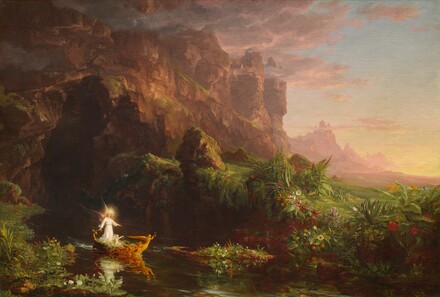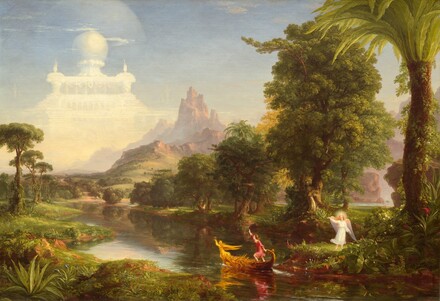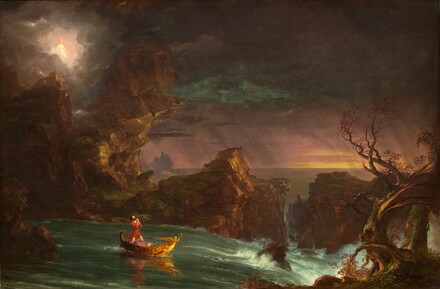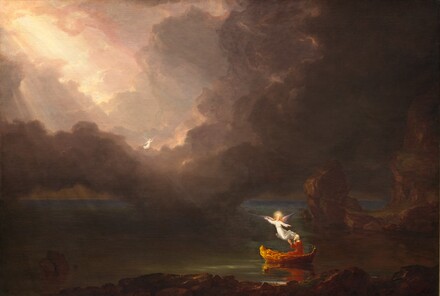 |
| The Good Samaritan, Stephen Sawyer, Versailles, Kentucky |
This has been one of those weeks when my head is swimming with thoughts I can not seem to reconcile. This Sunday's reading was the parable of the good Samaritan. Even if you aren't all that religious I feel certain most of us are familiar with the story. In one summary sentence; opening your eyes to those in need of help and actually stoping to help them. But it is obviously so much more than that.
Before I continue I thought I'd include the actual text for those interested, for those that want to skip to the art, scroll down for some pretty amazing renditions of the parable and lastly for those who accidentally found themselves here while looking for the Samuel L. Jackson movie, Hey yall! I won't be offended if you click out. Here's the link you're looking for...
The Samaritan.
The Parable of the Good Samaritan
25 On one occasion an expert in the law stood up to test Jesus. “Teacher,” he asked, “what must I do to inherit eternal life?”
26 “What is written in the Law?” he replied. “How do you read it?”
27 He answered, “‘Love the Lord your God with all your heart and with all your soul and with all your strength and with all your mind’; and, ‘Love your neighbor as yourself.’”
28 “You have answered correctly,” Jesus replied. “Do this and you will live.”
29 But he wanted to justify himself, so he asked Jesus, “And who is my neighbor?”
30 In reply Jesus said: “A man was going down from Jerusalem to Jericho, when he was attacked by robbers. They stripped him of his clothes, beat him and went away, leaving him half dead. 31 A priest happened to be going down the same road, and when he saw the man, he passed by on the other side.32 So too, a Levite, when he came to the place and saw him, passed by on the other side. 33 But a Samaritan, as he traveled, came where the man was; and when he saw him, he took pity on him. 34 He went to him and bandaged his wounds, pouring on oil and wine. Then he put the man on his own donkey, brought him to an inn and took care of him. 35 The next day he took out two denarii and gave them to the innkeeper. ‘Look after him,’ he said, ‘and when I return, I will reimburse you for any extra expense you may have.’
36 “Which of these three do you think was a neighbor to the man who fell into the hands of robbers?”
37 The expert in the law replied, “The one who had mercy on him.”
Jesus told him, “Go and do likewise.”
The person giving the sermon and my church last Sunday is a third year seminarian who will be working as a resident at my church for the next two years. This was only her second week and the first time I'd heard her speak. To be frank, I didn't have high expectations. Like any kind of public speaking it can take some time to find your footing. Well, not in this case. She blew me away with her sincerity, honesty and the way she made me feel uncomfortable in my seat. Now, lest you think I'm a fire and brim stone kinda Christian, let me assure you I am not. I am very comfortable in the grey of my Episcopalian faith. But the discomfort I felt was for what she made me feel about my own life. What am I doing to "love my neighbor?"
She spoke of the dangers on the roads in Aleppo, Syria, not two thousand years ago but today. This hit close to my heart remembering my time spent studying Arabic at the University of Aleppo. I was devastated to see it and so much of the town decimated, not to mention the staggering loss of life. What am I doing to be a good neighbor to those without a home, community or country?
From that she drew another gut wrenching comparison, Trayvon Martin. It it hard to even type his name with out the hairs on my arms rising and tears welling up in my eyes. At times I feel undeserving of the tears that flow every time I read of how black young men, children really, are denied the right of a childhood. Who among of us have not made mistake after mistake after mistake and gratefully or maybe even not so gratefully accepted forgiveness. What does it mean to be a good neighbor to those children?
I don't intend to make this post about the murder or the trial but its swimming around my head as I contemplate last week's lesson. Spoiler Alert: I don't have any answers.
I grew up with a majority of white friends, but the black friends I did have felt no different to me than my other friends. Our parents were all professionals, we all attended private school, we all played the same sports and all had similar stories. I'm embarrassed to admit this but what I didn't realize until this week was that it isn't a socioeconomic issue, it is 100% racial. Jonathan Capehart, a journalist I respect wrote an article this week that candidly discusses "the burden of being a black man is carrying the heavy weight of other people's suspicions." Do yourself a favor and read the rest of the piece here, after you finish this rambling behemoth of a post, natch.
Rest assured, as a good life-long Episcopalian, I don't have any answers to these questions but my eyes have been opened, albeit it embarrassingly late. I can do better. You can do better. And maybe, if we all take the time to stop and engage with our neighbors we will feel less suspicious and in turn avoid tragedies like the case of Trayvon Martin.
Ok, with all that said, there is some pretty amazing art work depicting this parable. Please enjoy! And by all means, please share a favorite of yours or your thoughts on the parable, or anything else on your mind.
 |
The Good Samaritan, Vincent van Gogh, 1890
Kroller-Muller Museum, Otterlo, Netherlands |
 |
| The Good Samaritan, Johannes Zick, 1753, privately owned |
Are you seeing the light in this one? As you may (or may not) recall I wrote about my fascination with light and darkness in religious artwork
here. Its like a flashing strobe light telling us to pay attention, this is important.
 |
Master of the Good Samaritan, unknown Dutch artist, 1530-1550,
Centraal Museum, Utrecht, Netherlands |
 |
The Good Samaritan, Aime-Nicolas Morot, 1880,
Petit Palais, Paris, France |
And one more, this one is a sculpture, as you can plainly see. The interesting thing I learned is that it was sculpted by the same artist that sculpted the Statue of Liberty. He created this sculpture at the age of nineteen and it was the first piece he showed at the Paris salon. The size is a rare example of his work in that he typically preferred colossus sculpture. And there you go, a little art fact squeezed in. All information credited to and found on the Musee de Orsay's website.
 |
The Good Samaritan, Frederic-Auguste Bartholdi, 1853,
Musee d'Orsay, Paris, France |
Cheers,
Ouiser




























